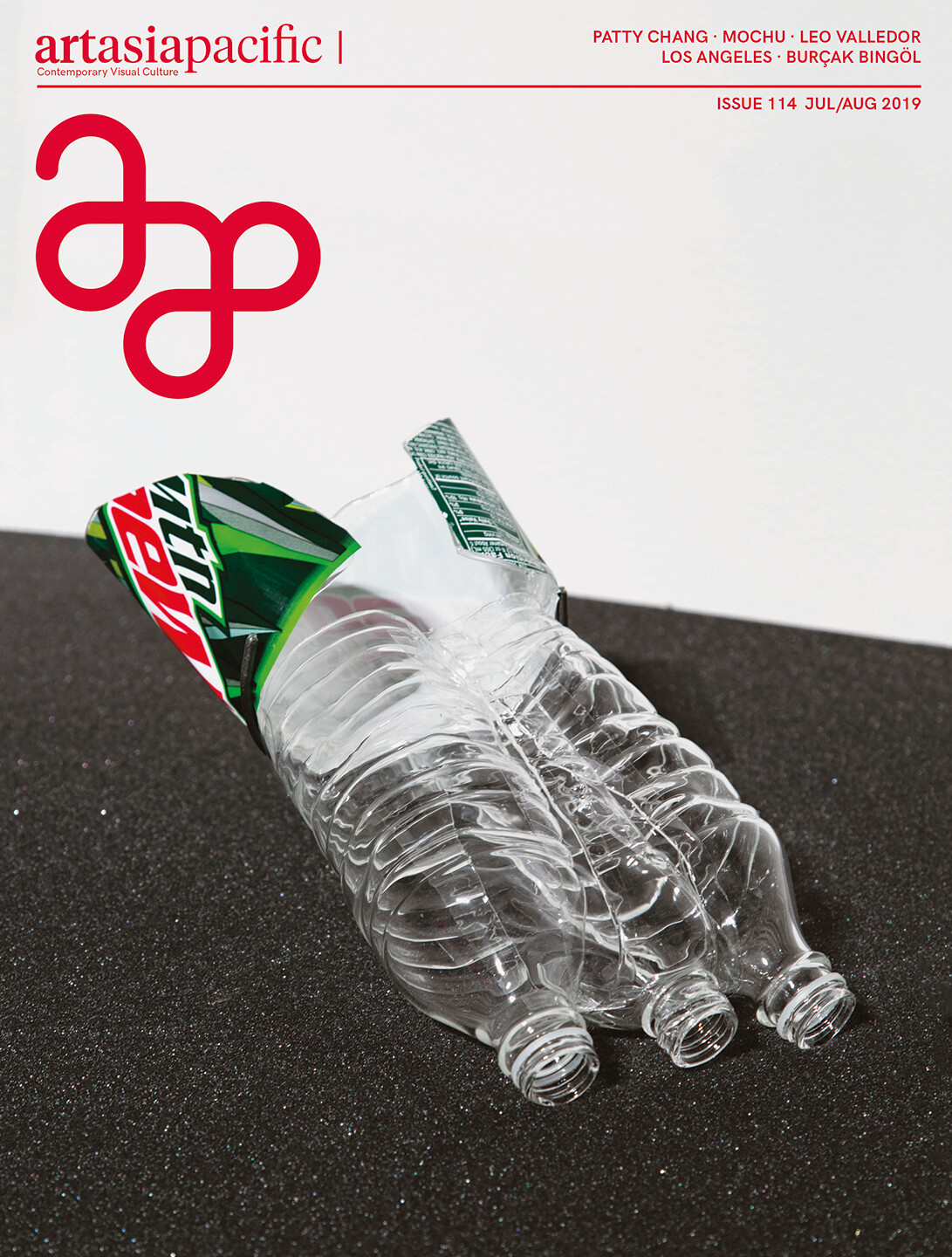July 1, 2019
After signing off on the July/August issue of ArtAsiaPacific, the editors are hoping to savor two comparatively languid months off from the frantic art world calendar. However, world events, in Hong Kong and elsewhere, won’t relent. This issue is closely bound to the real world, and focuses on artists’ diverse interests and concerns—from how humans are speeding up our own extinction, to questioning how technology is re-engineering life as we know it.
In our cover Feature, AAP managing editor Ysabelle Cheung delves into the works of Patty Chang, charting the profound environmental and sociological conditions that have engendered her recent projects. From mourning the demise of human civilization due to anthropogenic intervention, to navigating ideas of filial debt through the maternal medium of breast milk, Chang radically confronts the consequences of our existence on this ravaged planet.
Our second Feature is a conversation between two artists and cinephiles, Mochu and Lantian Xie, who discuss the phenomenon of shape-shifting characters in popular cinema as a stand-in for figures who are “at home with opacity, ambiguous translucencies and other metamorphic states.” Their subjects include Kevin Costner adapting to an inhospitable planet in the 1990s sci-fi adventure Waterworld, the invisibility of art held in freeports, cinematic special effects, as well as the intoxication and delirium explored in Mochu’s own works.
For In Depth, AAP editors take a close look at four projects: Larissa Sansour’s latest film, a climate-fiction narrative that debuted at the Denmark Pavilion at the 58th Venice Biennale; the specters animating Aki Sasamoto’s recent installation of spinning whisky glasses; the repetitive, gestural performances of Zeynep Kayan; and Lin Jingjing’s fictional shop selling artificial-intelligence robots and life-enhancing drugs. Rounding out the Features section, for Inside Burger Collection, Astrid Mania explores the sociological films, videos and photographs of the internationally revered Herlinde Koelbl.
In Essays, Patricia Chen analyzes the implications of Eugene Tan’s controversial appointment as director of the Singapore Art Museum when he already occupies the position of director of the National Gallery Singapore. Antony Dapiran’s essay reflects on a panel talk organized by AAP at Art Basel Hong Kong in March in which four Chinese-art-world experts—gallerist Tsong-zung Chang; curator Karen Smith; collector Uli Sigg; and academic Claire Roberts—discussed what Chinese contemporary art looked like in the 1990s before China exploded into the juggernaut art market of today.
Our Profiles section explores artist Seulgi Lee’s colorful abstractions; Beijing-based artist and curator Long Xinru’s relationship to advanced technologies; and the organization-building journey of Mohammed Rashid al-Thani, founder of the Institute of Arab and Islamic Art, which is due to reopen in an expanded location in New York City later this year.
Elsewhere, in One on One, Pio Abad traces the life and career of Filipino-American minimalist Leo Valledor who was present at seminal postwar cultural moments on both coasts of the United States. In a Dispatch from Los Angeles, Danielle Shang writes of a collective, competitive spirit that is geared toward internationalizing the Southern Californian art scene. On a recent trip to Istanbul, AAP associate editor Chloe Chu visited the studio of Burçak Bingöl, whose ceramic works explore materiality, cultural identity and heritage. In the Point, Andrey Alekhin and Misha Libman, co-founders of Snark.art, an “art production platform and laboratory that uses blockchain as a creative medium,” point to the ways that the digital database technology can revolutionize the way we collect, view and manage artworks.
Like the creators of Snark.art, many of the artists in this issue are exploring radical ideas for adapting to life in an uncertain future. We at AAP are also open to adaptions—one being a new look for the magazine by art director Heesun Seo—which we hope reflects the content of these pages. No matter how speculative tomorrow may appear, the ever-evolving world of art remains as intertwined with the real world of today as ever.
A digital edition of the full AAP 114 July/August issue is now available for purchase on Zinio, Google Play, iTunes, and Magzter.
Don’t forget to check out the ArtAsiaPacific Podcast; subscribe on iTunes for exclusive art news, interviews and stories narrated through sound.

